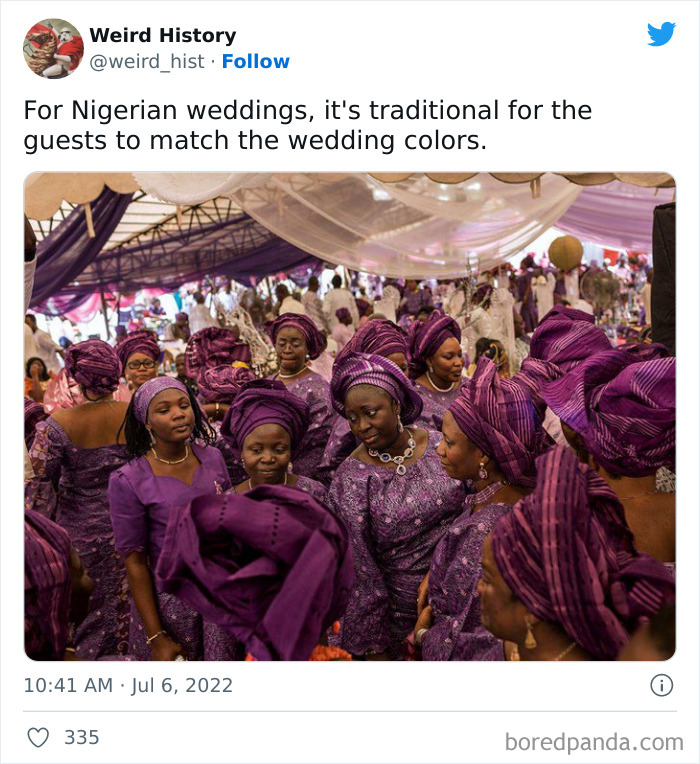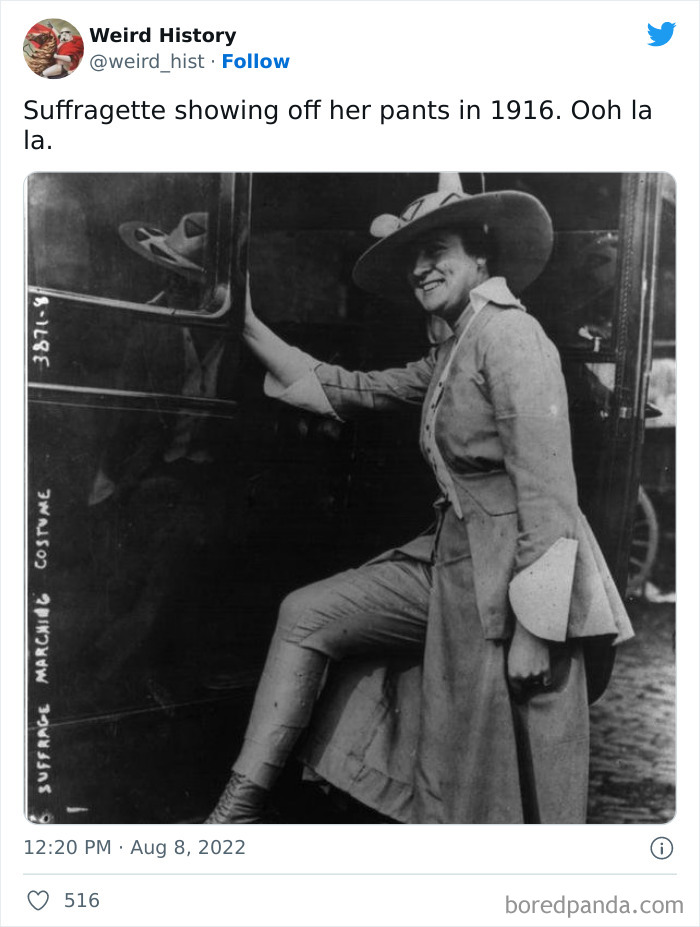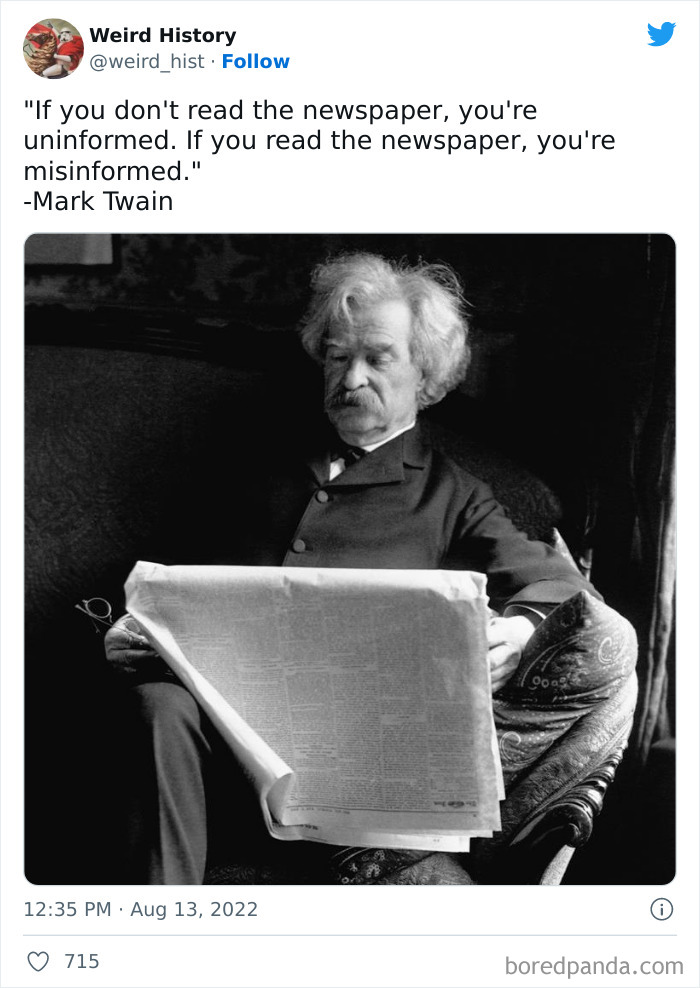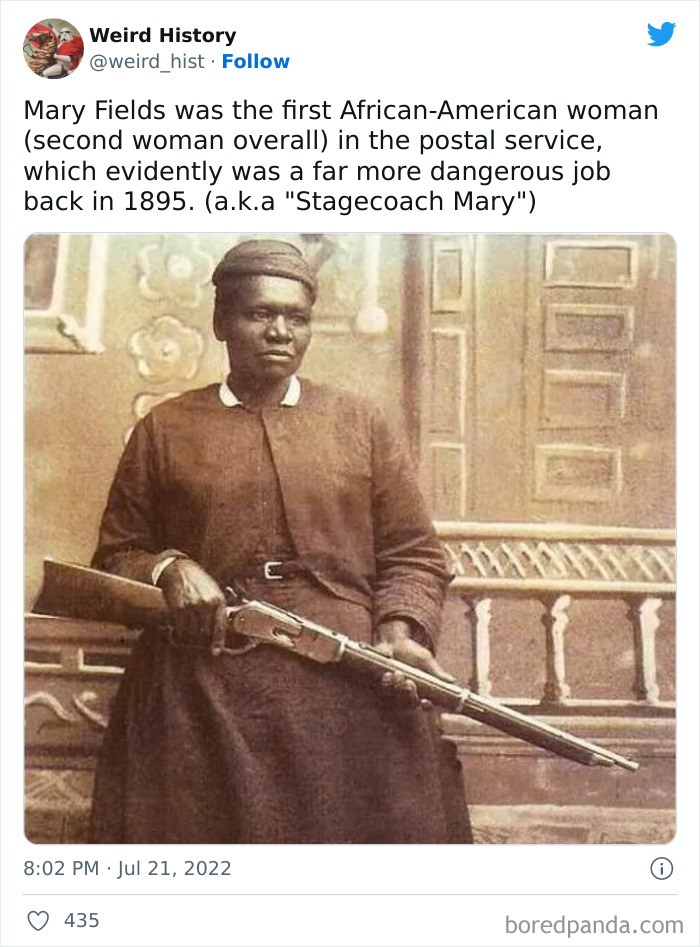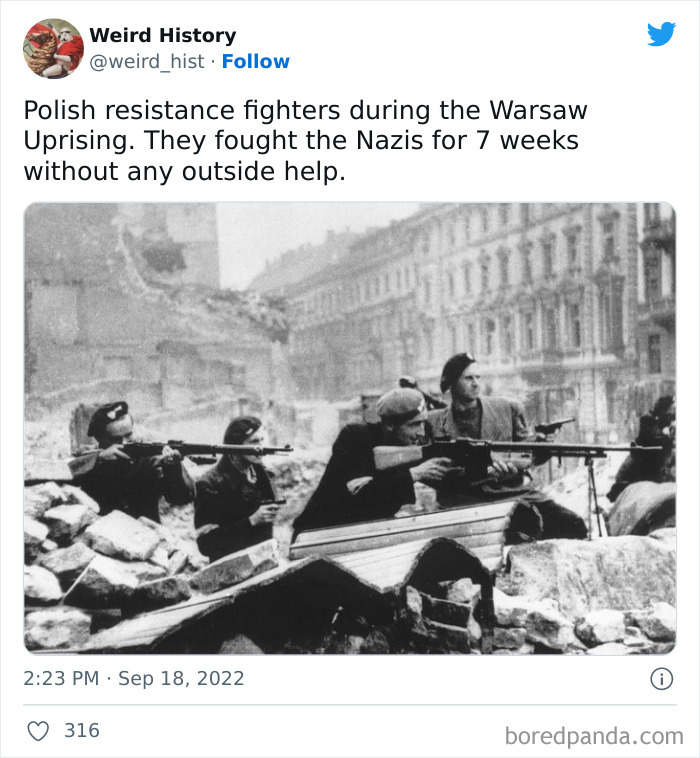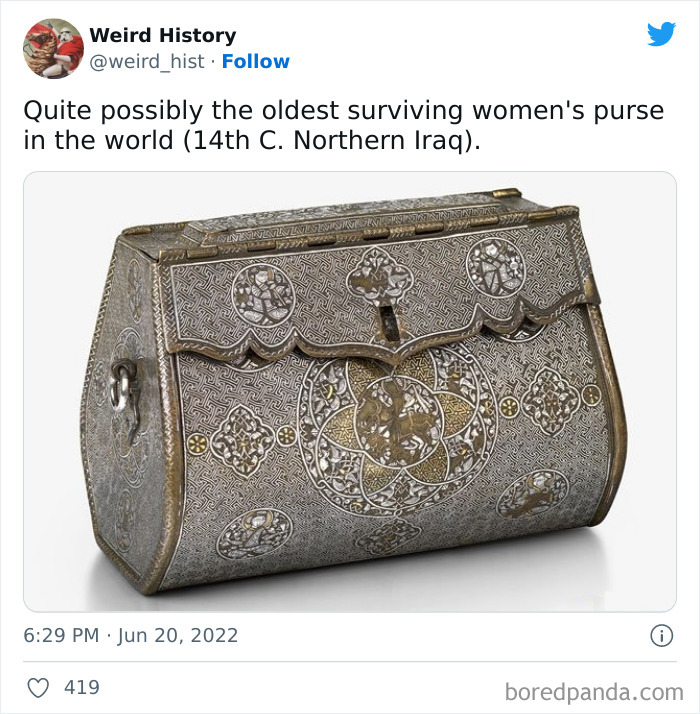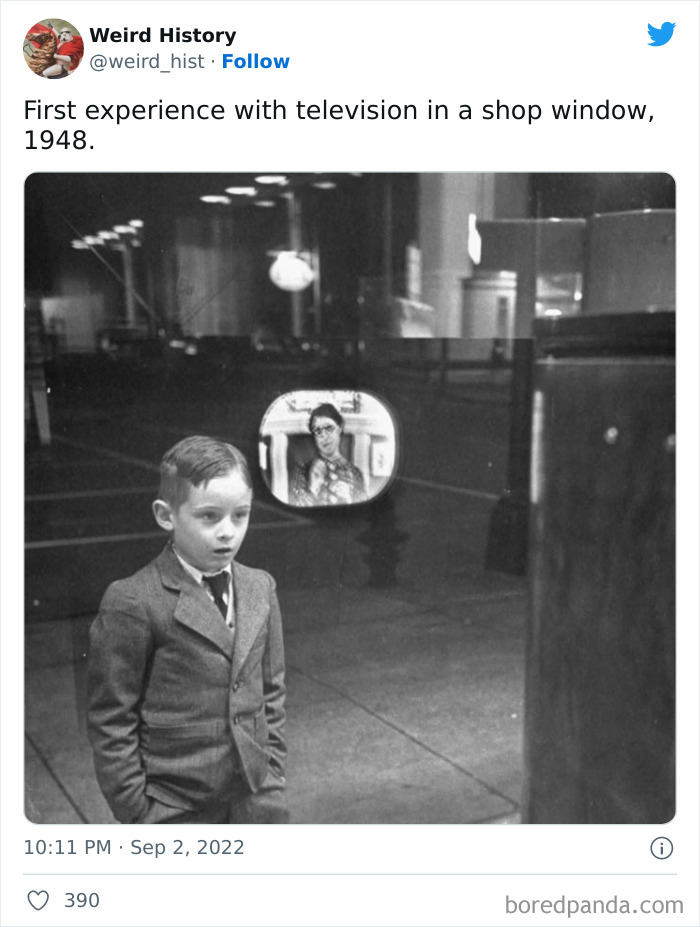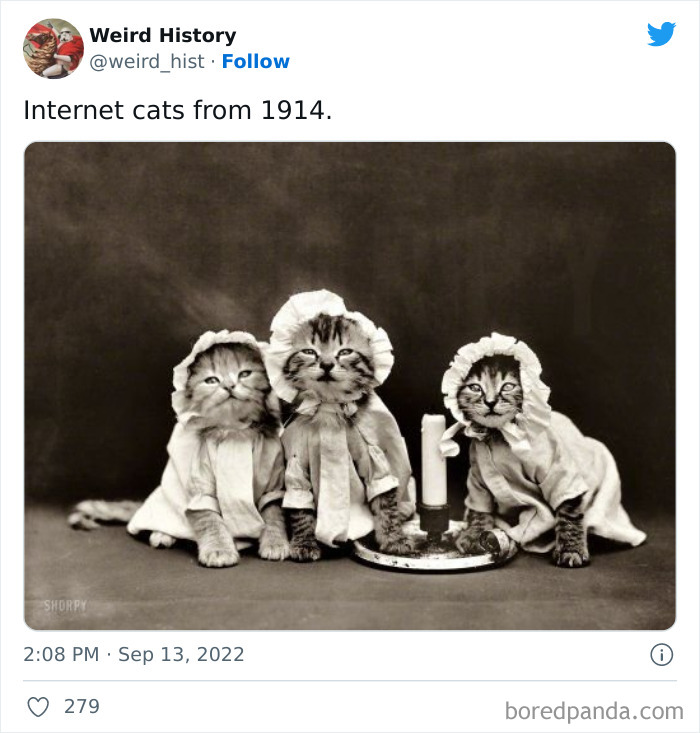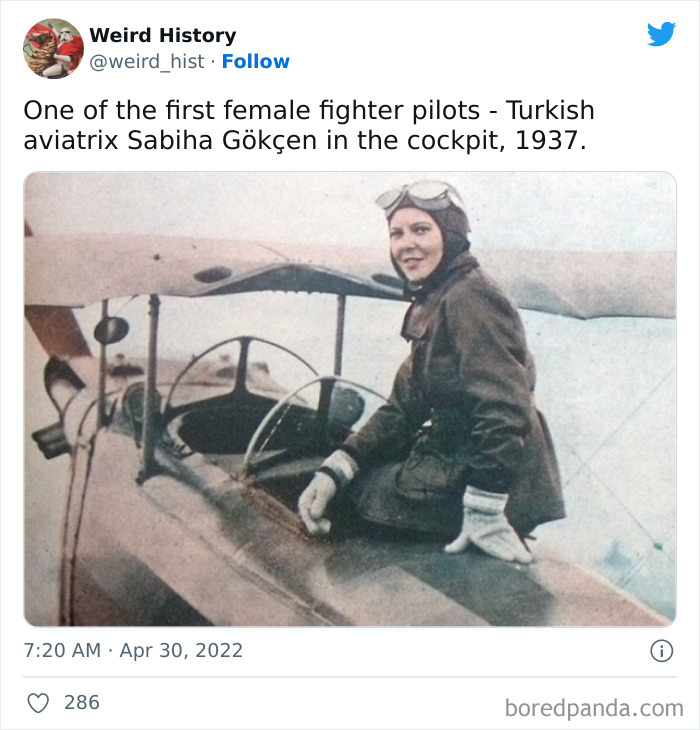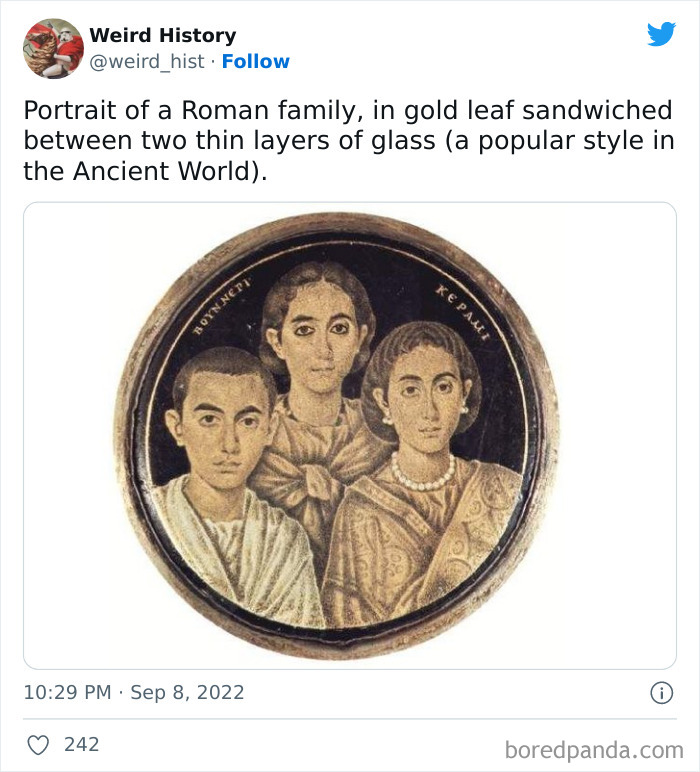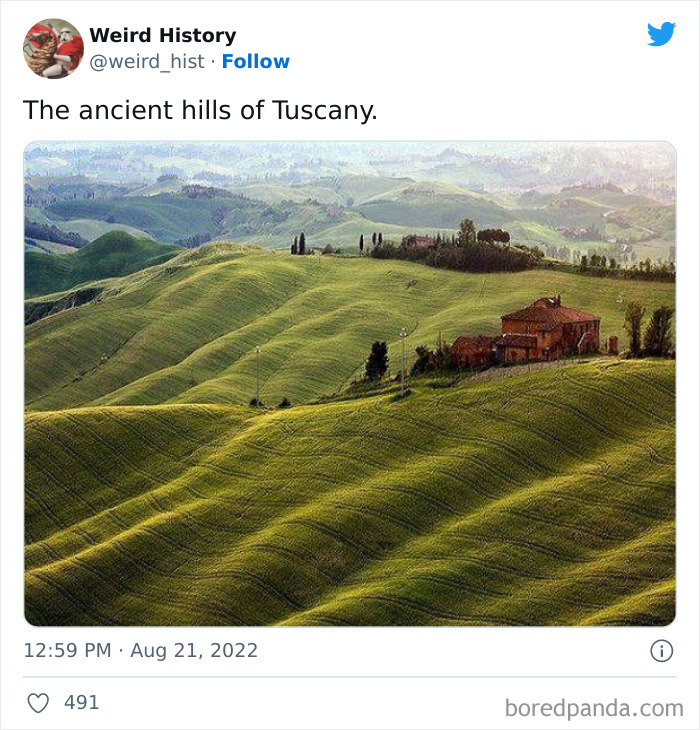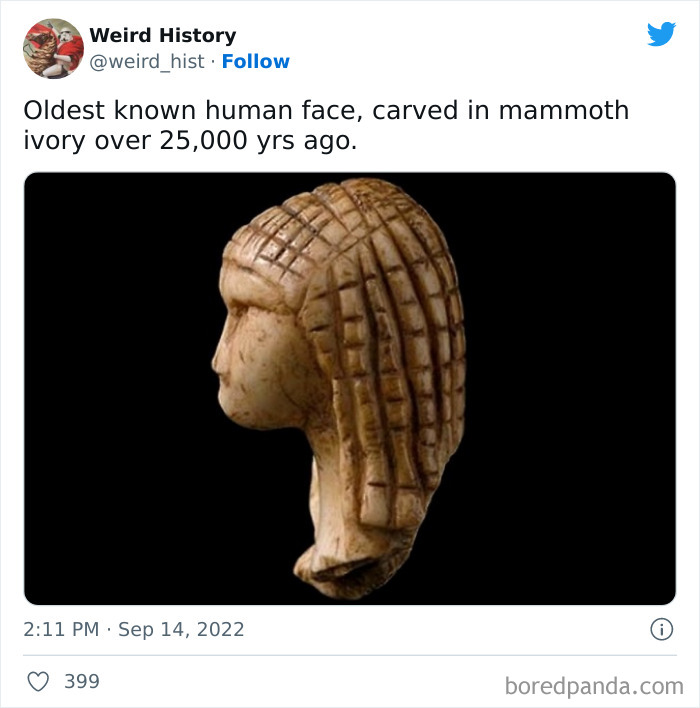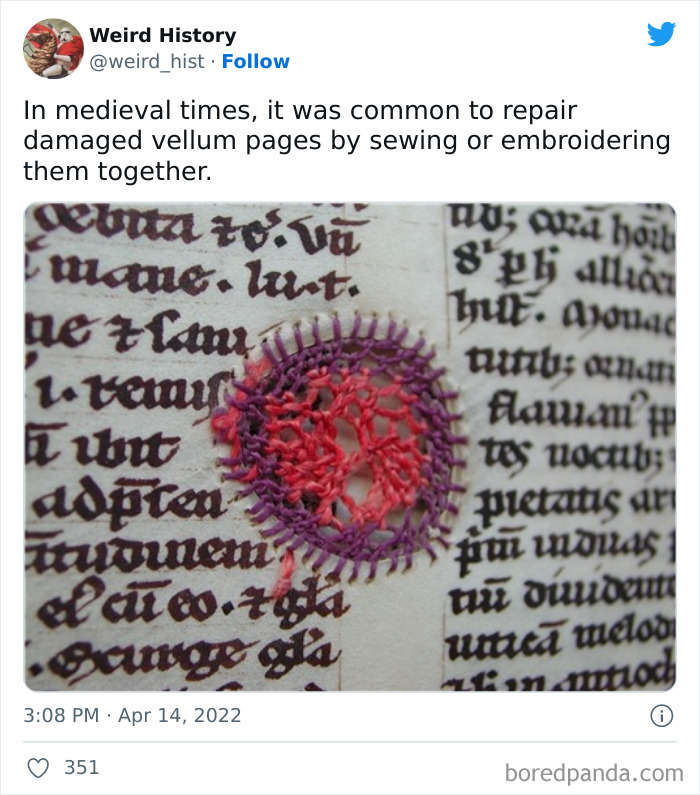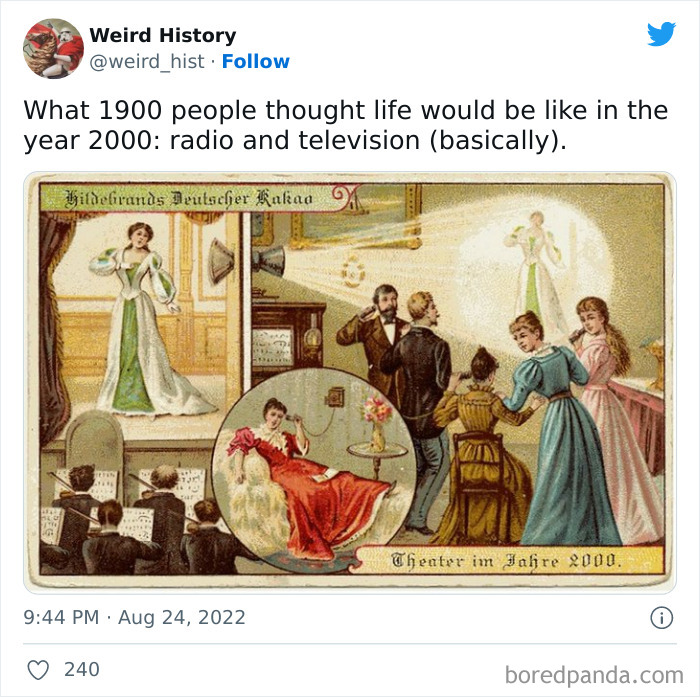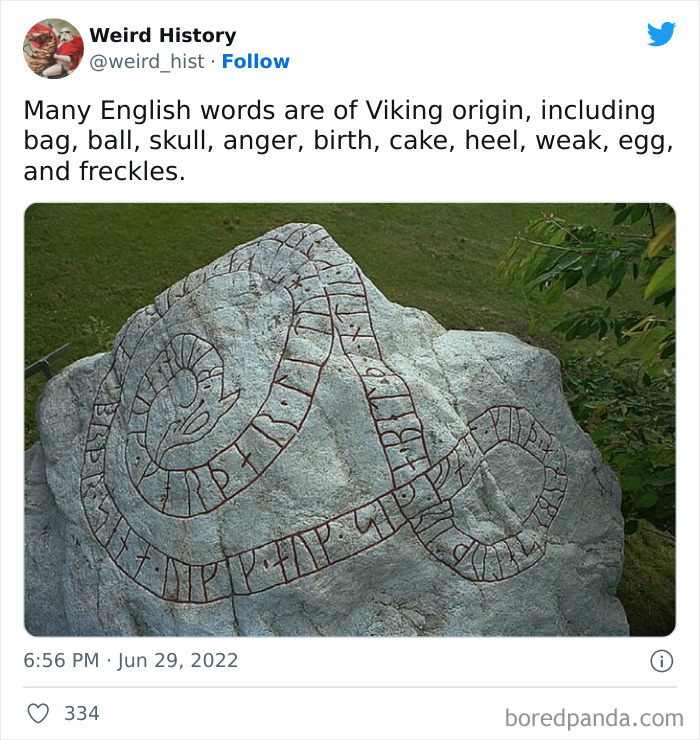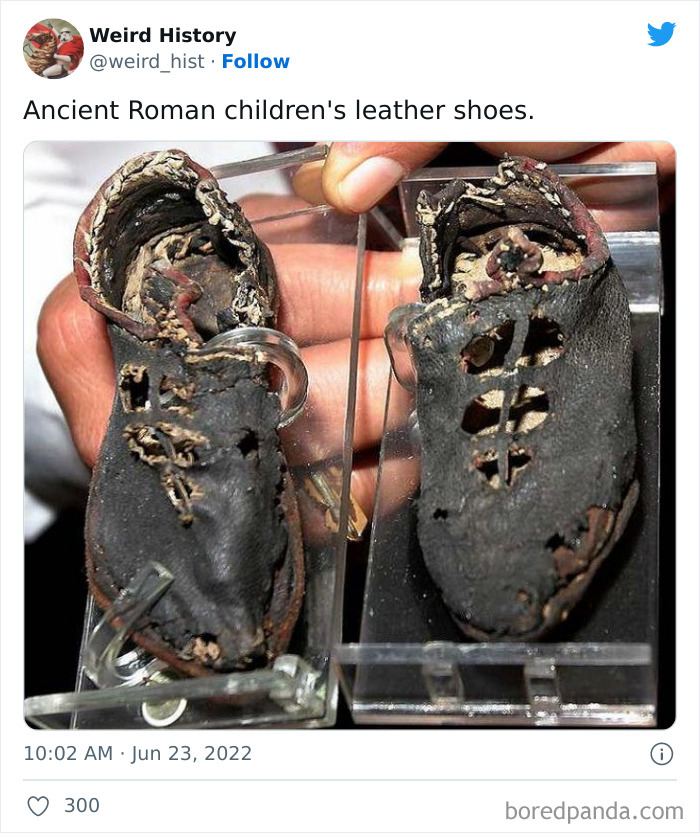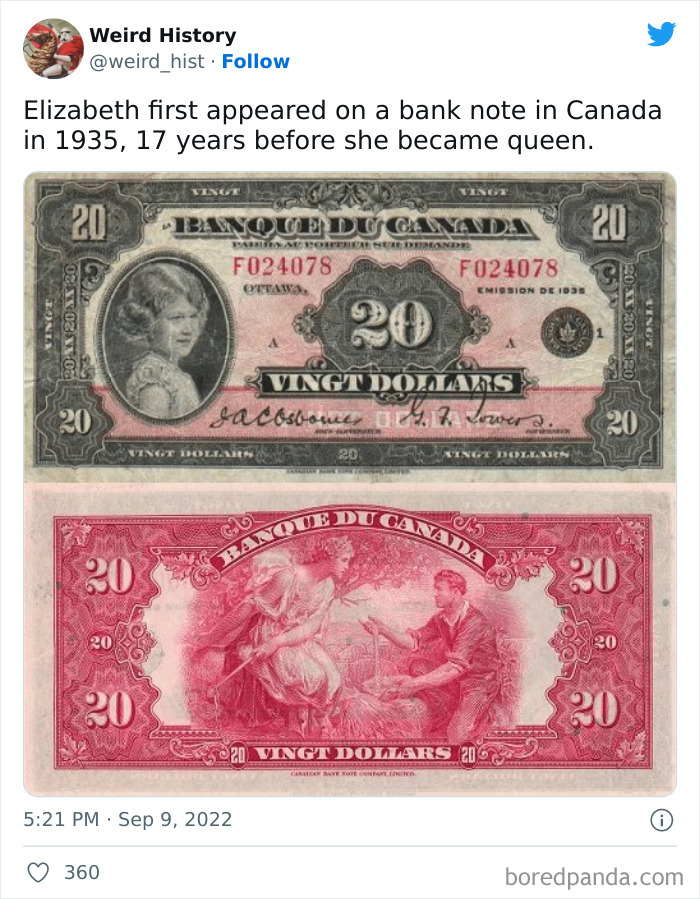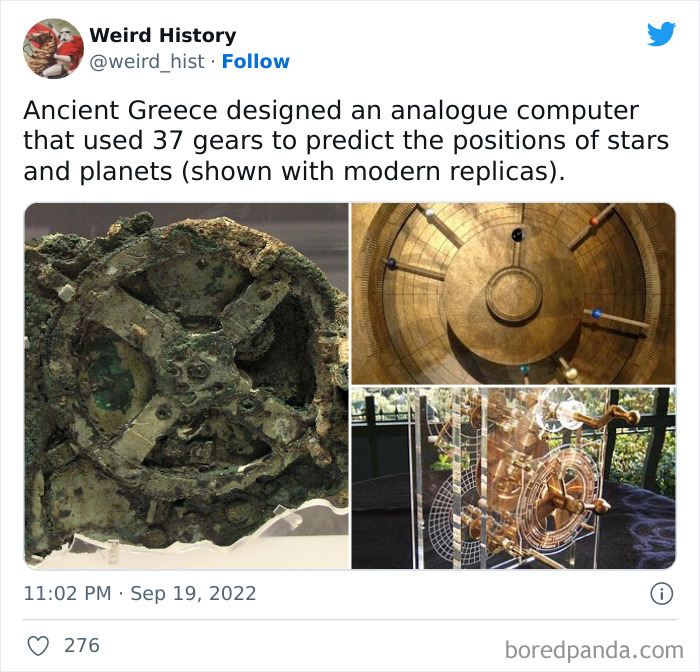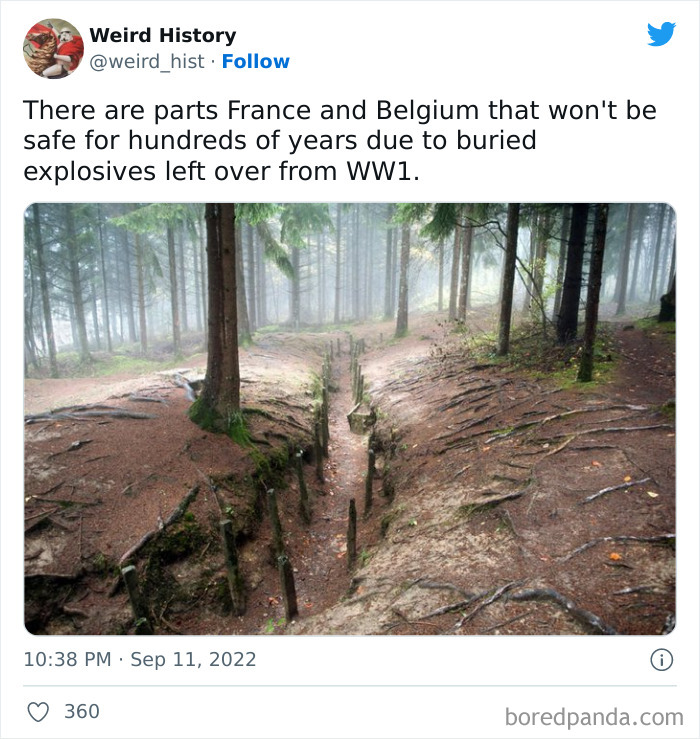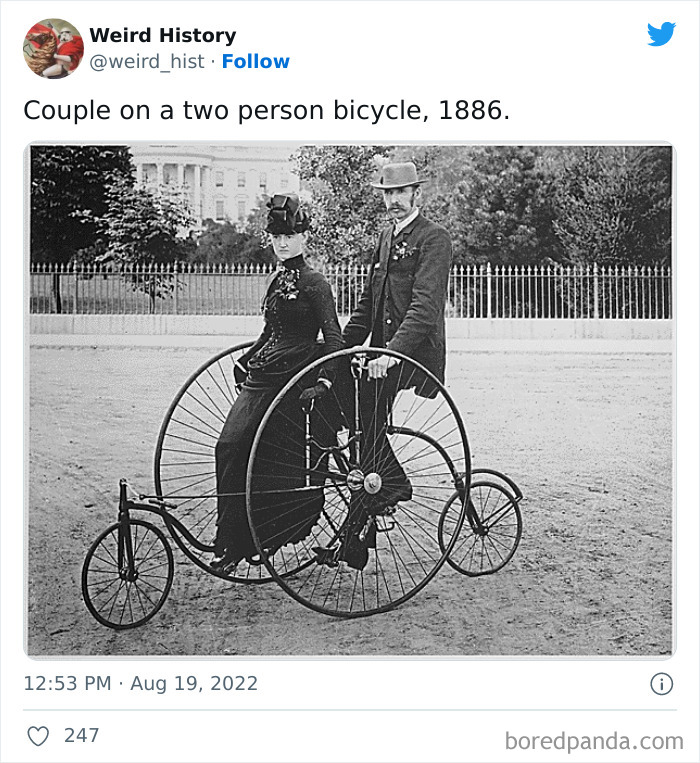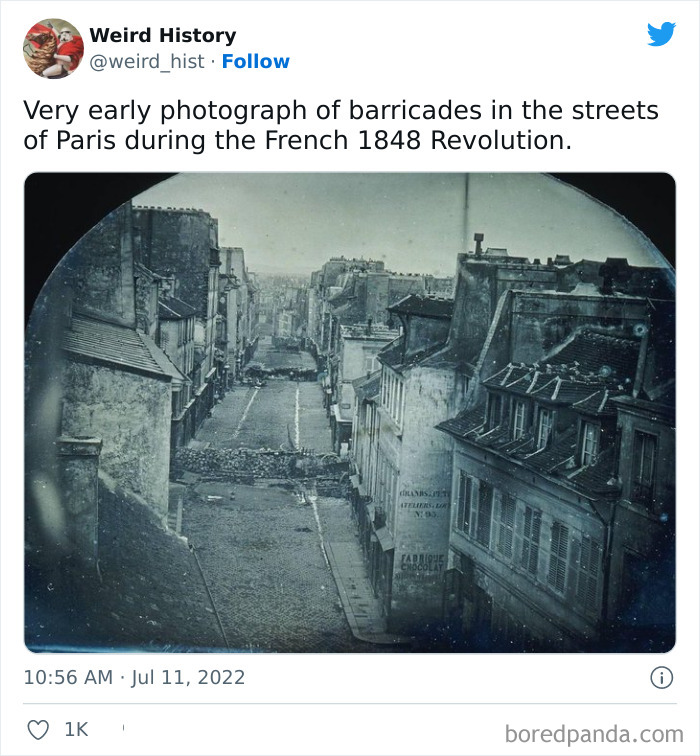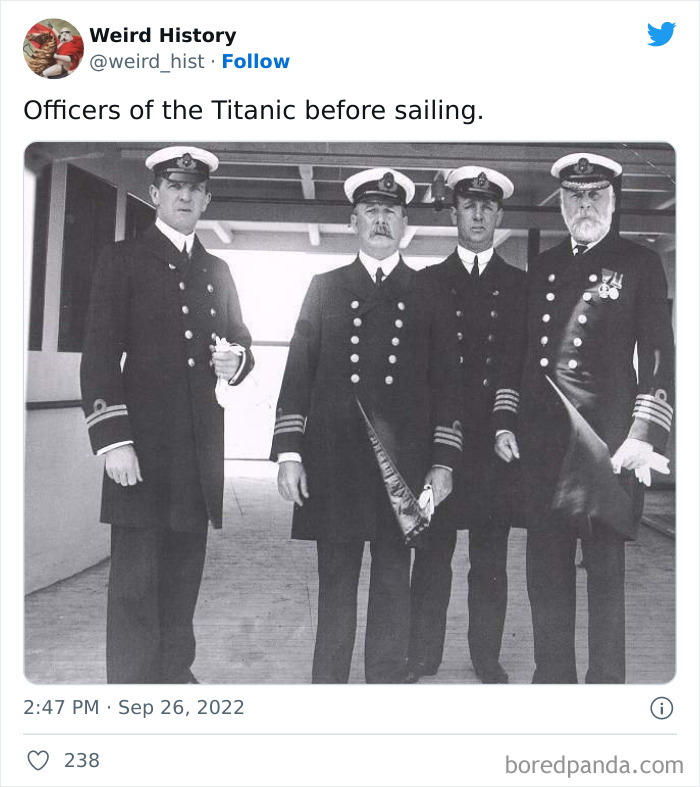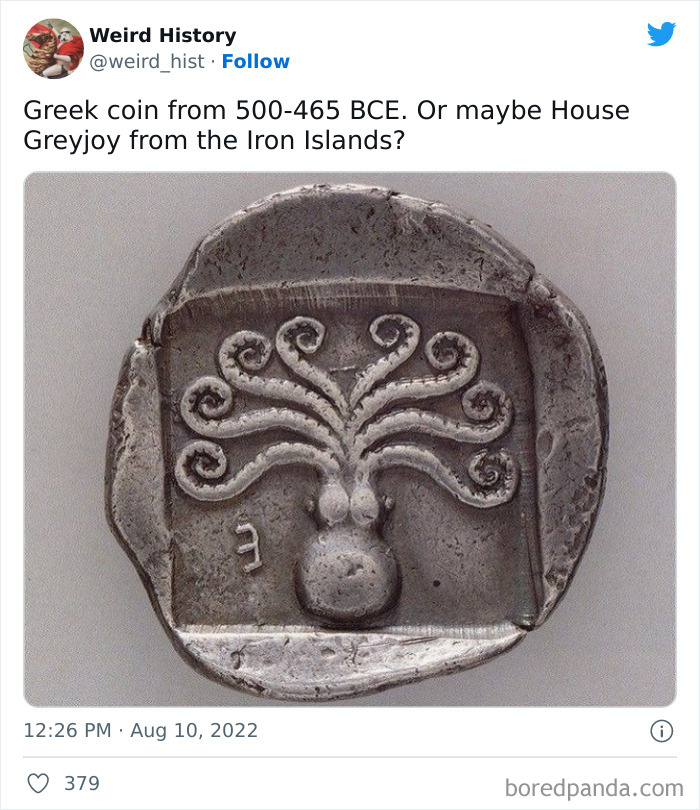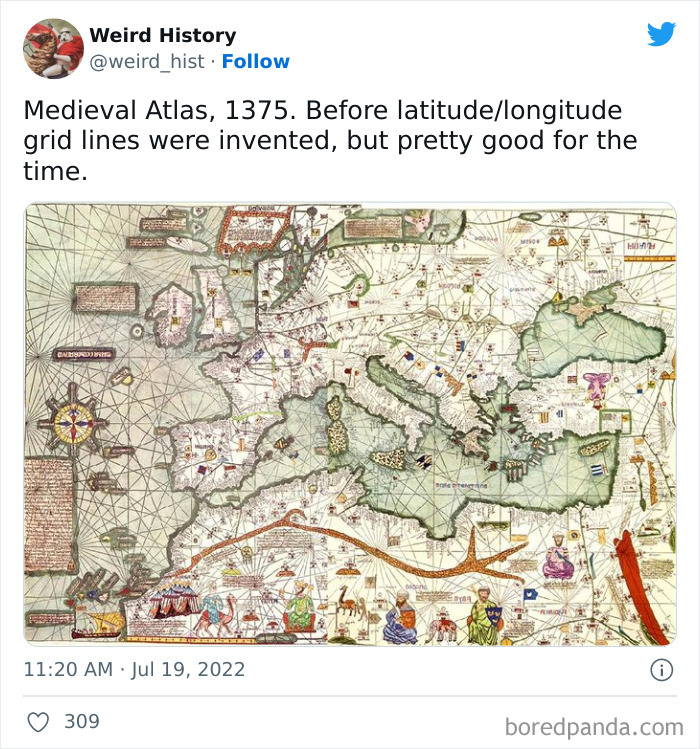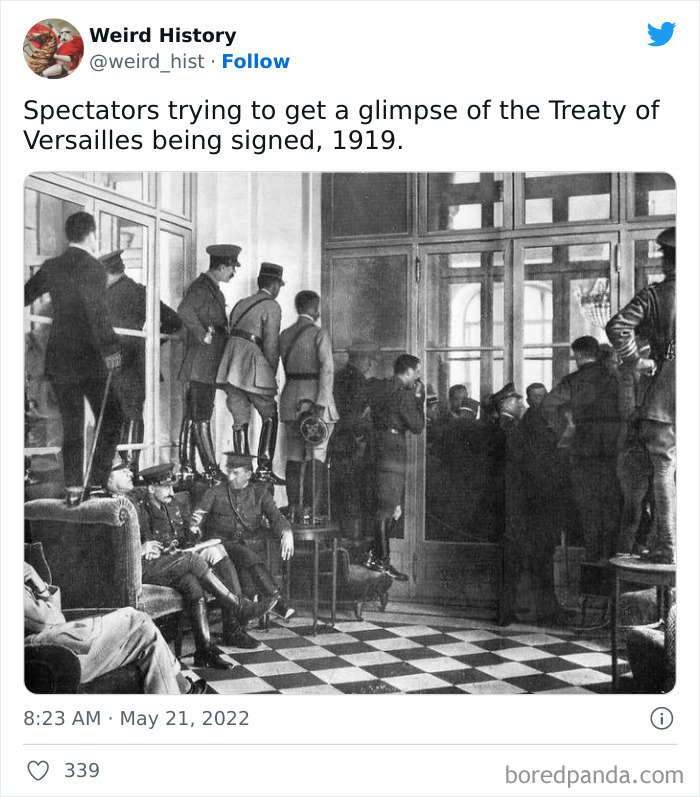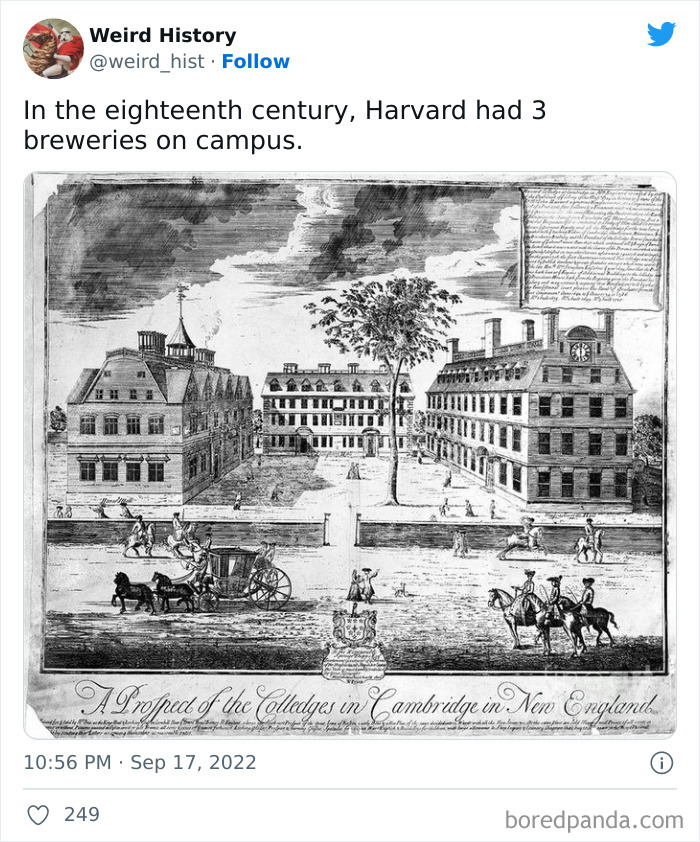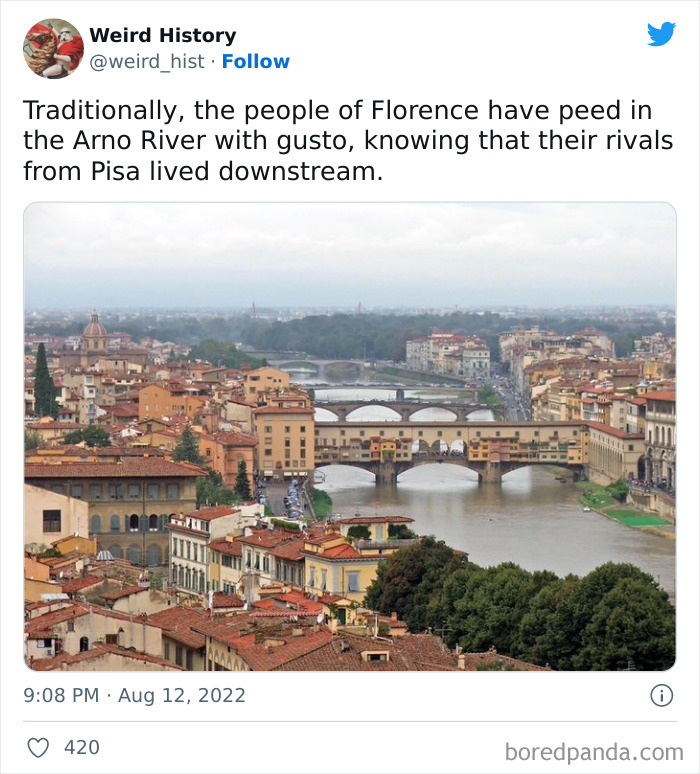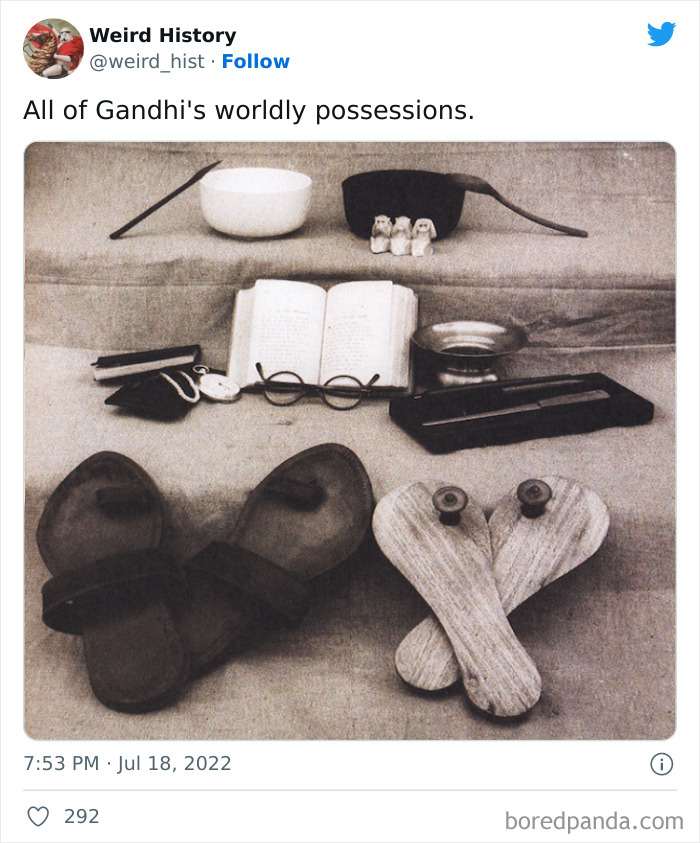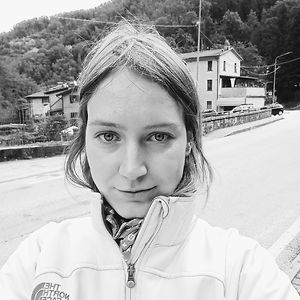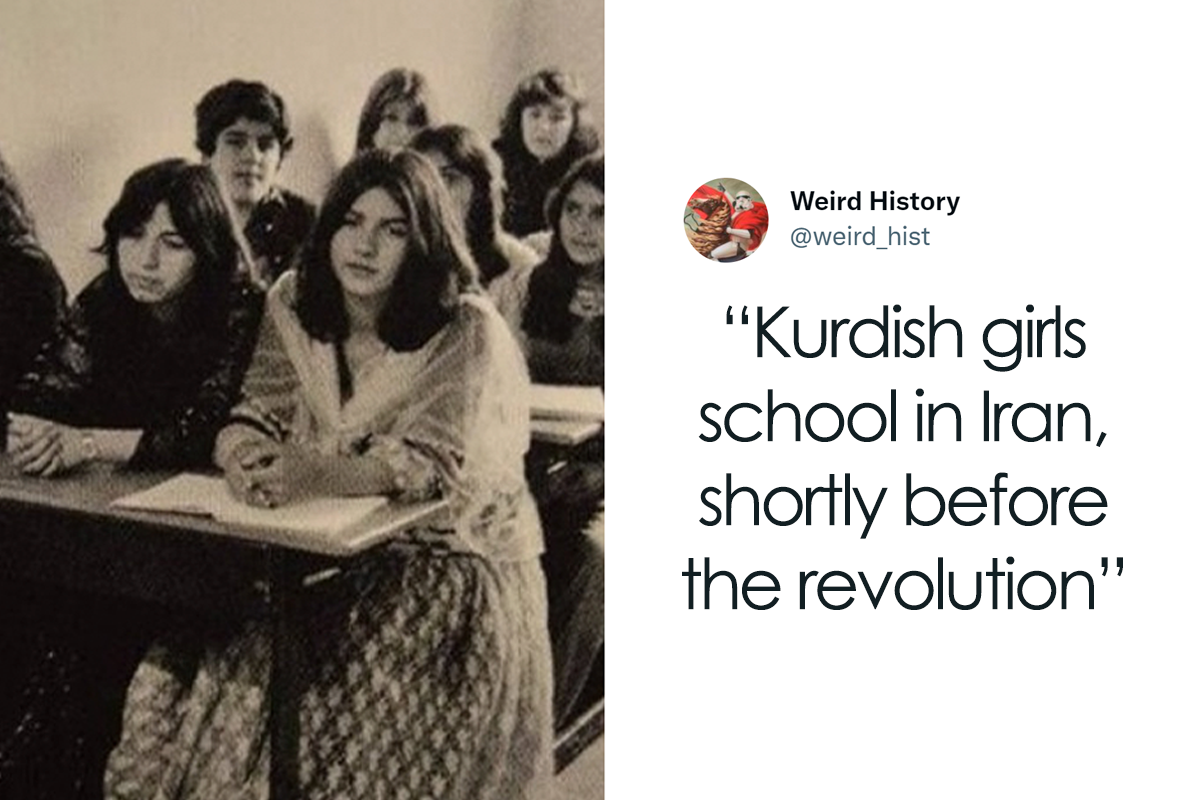
‘Weird History’ Is An Account That Shares Interesting, Odd, And Funny Things That Happened Throughout History (50 New Pics)
They say truth is stranger than fiction, and they’re not wrong. We often look for entertainment on the big screen or media only to forget the biggest amusement park of wonder, exploration and ingenuity called human history.
So today, we are taking a look into the weird, bizarre and simply incredible world of the past thanks to the Twitter page “Weird History.” Boasting 186.4K followers, the account shares historical peculiarities not everyone knows today.
From pin boys lining up the bowling pins before automated machines to the fact that Harvard had three campus breweries, to a photograph of a boy experiencing television for the first time in 1948, these are the moments worthy of books.
Scroll down through the most peculiar collection of historical photos below, upvote your favorite ones and be sure to check out our previous curiosity-inducing posts about history in photos here and here.
This post may include affiliate links.
Although we most often imagine old photographs as black and white, the history of applying color to photographs is almost as old as photography itself. But up until the mid-1940s, the vast majority of all photographs were black and white due to limitations in modern techniques and technologies.
The only way to make a color photograph was to color it by hand, which was a meticulous and lengthy procedure. This was naturally a very time-consuming process and only very few people were able to afford such a process and artifact, therefore we don’t see many colored photographs left from the earlier photography period.
These days, many historical photographs are colored thanks to the advanced technologies. There are numerous artificial intelligence-powered apps available for everyday users, and then there are professional photography renovators and colorists who work meticulously to bring the old photographs back to life.
According to Lisa Yaszek, a Regents Professor of Science Fiction Studies at Georgia Tech where she researches and teaches science fiction as a global language crossing centuries, continents, and cultures, colorizing historical photos appeals to us as modern people because we’ve grown up surrounded by colored images.
“In particular, we’re often attracted to historical photos that have been colorized because that process allows us to see details we might not notice otherwise—the subtle pattern of someone’s clothing, the scattering of freckles on another person’s face and arms,” she explained.
The professor explained that "it literally gives us a new perspective on history, fostering a greater sense of connection between ourselves as modern viewers and the historical subjects we are looking at. For instance, we might marvel that a pattern popularized in the Victorian era is fashionable again or realize that we have the exact same physical characteristics of an ancestor we never met!”
Yaszek argues that colorization can also connect us to history in other, more surprising and creative ways as well. “As a science, colorization is about finding the appropriate hues, tones, and tints to add to a grayscale photograph. This involves intensive research in archives, online, and in conference with other historical experts—all of which, of course, gives the colorist that many more connections to the historical era they are researching.”
Having said that, Yaszek noted that colorization is more than just a science; it’s an art as well. “No matter how many written documents or colored artifacts a colorizer looks at, they can never be entirely sure that they’ve exactly replicated the actual colors of the items being photographed.”
The professor continued: “As so a colorizer often combines information with instinct and data with desire to make color choices that feel both intellectually and emotionally authentic to the historical era in question.”
Moreover, the colorization of old photos reveals something more fundamental about representing memories. “It can also remind us that history is always subjective and that historical documents—including photographs—are not just objective representations of reality, but artifacts that are sometimes carefully staged and otherwise manipulated to present viewers with very specific representations of historical people, moments, and events,” Yaszek explained.
The professor reminds the viewers that colorized photography has an interpretative aspect to it and we should be aware of it. “Because colorized photos have so clearly been manipulated by artists to tell a certain story, they remind us that the process of telling history always involves a certain amount of creative interpretation,” Yaszek said.
She added that it’s okay, “because it means that we all have opportunities to contribute to ongoing conversations about history and its relations to the present and future, much as we find in Reddit and other communities devoted to exploring the past through historical photography.”
Revolutions were taking place all over Europe that year. My third great grandfather left Germany alone as a 15 year old that same year because of them.
That's what i thought too, mainly because of the snakes and boobs I can see :)
Load More Replies...Idk whether to talk about Cthulhu who's tattooed on my left hand, or hydra
I think it didn't quit work as they lived mostly by the coast (where submarines weren't) and they could tell the difference between friendly submarines and enemy ones.
Note: this post originally had 136 images. It’s been shortened to the top 50 images based on user votes.


